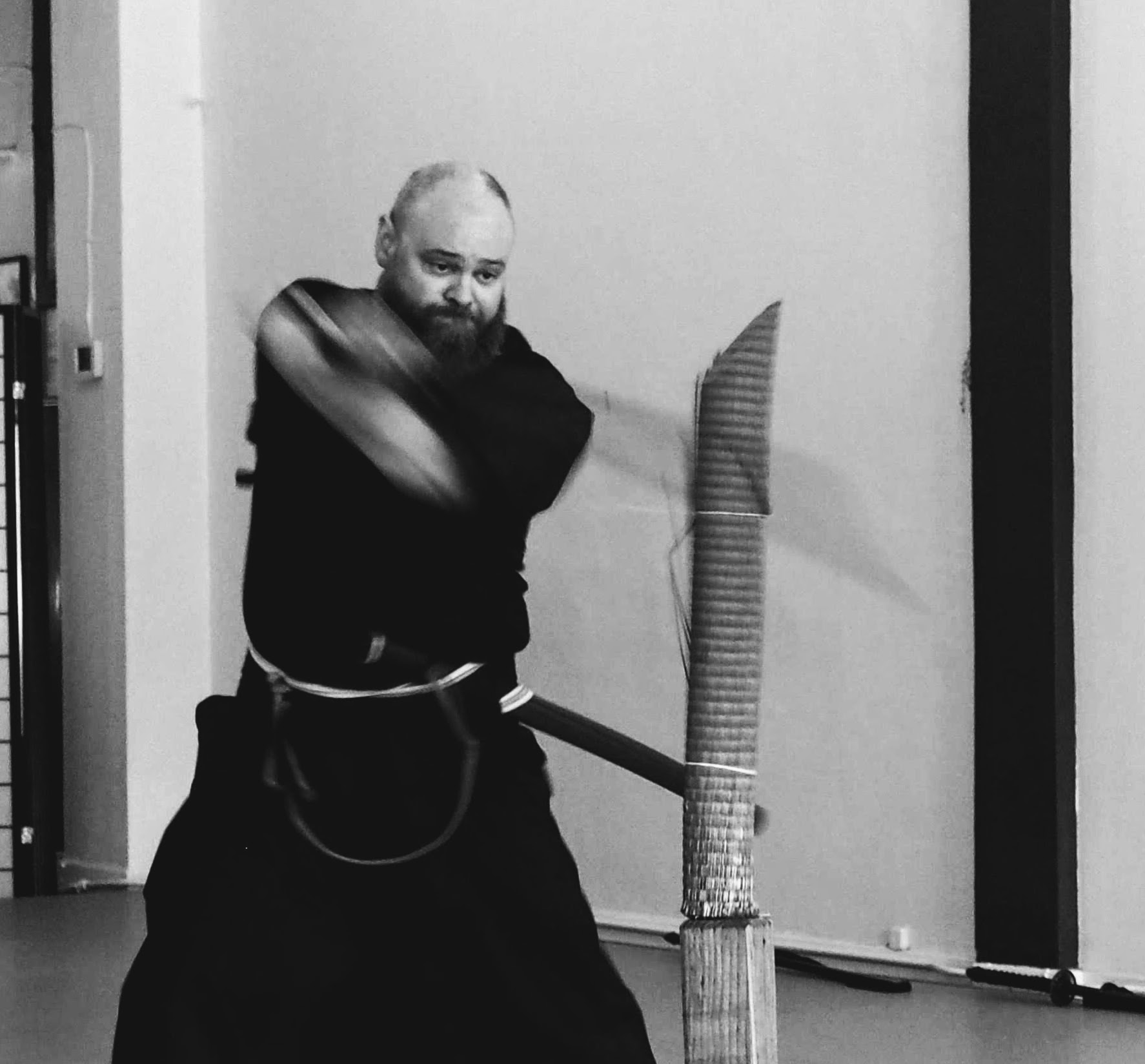
Admit it, you’ve been told to “just relax” in your training. Probably a lot. By a lot of people who seem really good. Sometimes it helped a little, but mostly it was just frustrating. You weren’t trying to be tight. It’s just something you struggle with. Maybe it’s your shoulders, or your hips, maybe your quads are always clenched. If only you could relax it would all be better. I used to be a believer. I tried to just relax more. I once bought into the paradigm so fully that I let my arms completely relax while performing a throw. I snapped my forearm in half on my partner’s shin. Did I just need to relax more? (Editor’s note: he did not in fact need to relax more…)
I’d like to offer a different way to think about relaxation. After all, it’s absolutely true that being tight and too tense will slow you down, isolate movement, and tends to get you dumped on your butt in any kind of freestyle encounter. Everyone I know doing aiki related arts has struggled with being “too tight” at times. Sometimes it’s practically a calling card. The problem with “just relax” is that relaxation is an EFFECT and not a CAUSE. Relaxation isn’t something that you do, it’s simply a LACK of excess tension. So when you tell someone to “relax” you aren’t actually giving them any useful advice. You’re mistaking the end state for the process. Reduced tension is a state that you exist in once you’ve actually DONE something else to improve the situation. As an instructor, I need to present something that a student struggling with excessive tension can DO. If someone asked me how to lose weight, and I told them to “be thin!” I’ve mistaken the end state for the process.
Tightness is often your body correctly recognizing that it’s under pressure. My group does an insane amount of nerdy pressure and movement training outside of traditional techniques. That means that we’ve bumped up against this issue literally thousands of times. In the 20 years I’ve been studying bodyskill based systems (Aunkai and Sangenkai primarily) “just relax” has never helped.
OK smartypants, if “just relax” doesn’t work, what’s your fix? The frustrating answer is that there is no ONE simple alternative. Excessive tension is a sign that something is wrong. It’s a marker that something we’re doing is not right and we need to find what’s CAUSING the tension. Until we do that, we can’t release the excess tension. Something that’s become clear to me in the last few years is that aiki (and here I’m using the Sangenkai/DR/Sagawa meaning, not Kisshomaru or Tohei’s) is often the key to releasing excessive tension. This is because real aiki creates “tomei na chikara” (transparent power) according to Sagawa. Aiki diminishes your partner’s power. This is a very strange concept for people who have never actually felt it, and I’ve only felt it from a handful of people. I’m sorry, but you probably haven’t felt this, not in isolation. And if you did, you’ve probably been chasing that feeling ever since. Here’s an example of how you can experience this phenomenon all by yourself though. I really encourage everyone to try this even though it sounds stupid. Grab a couple dumbells: one that you can just barely lift with a straight arm to shoulder height and one that’s about 1 lb. A small can of beans will do. Now I want you to really focus on what you feel like to yourself. Lift the heavier weight up to shoulder level in front of you with your arms straight and hold it there for a few seconds really feeling what your shoulder and upper back feel like. It probably feels “tight”. Most likely your shoulder is even raised slightly towards your ear as your other muscle groups try to help. Feel how restricted your shoulder is. You likely feel pretty stuck. Put that weight down and grab your very light weight. Hold it up at shoulder level and pay attention to how your shoulder and upper back feel. You probably feel a lot more relaxed and have greater range of movement. It’s easier to keep your shoulder down, you could hold this longer. It’s just easier and your body is under less duress. Relaxation didn’t accomplish this, you could not simply relax to lift the heavier weight.
Please commit this to memory (or at least try it on for a while and see how it fits):
“The way to release excess tension under pressure is to reduce the pressure itself.”
This is what aiki does, it creates tomei na chikara which compromises your partner/opponent’s stability and power. You are effectively changing them from a heavy weight to a lighter weight.
If this sounds interesting and you find yourself in the Seattle, WA area we’d love to show you what we’re working on. This is very hard to discuss without being able to feel what I’m describing. Finally, this is a fairly short blog post and this subject could be a book or even a song (that’s a neijia joke…). There’s a lot I’m either leaving out or glossing over. My hope is to get the idea across that there are better ways to teach these outcomes.




